Christopher Vogler's The Writer's Journey
with J.R.R. Tolkien's The Hobbit
The Study Guide
Welcome to our comprehensive, handy dandy Study Guide for Vogler’s version of the Hero’s Journey from his book, The Writer’s Journey, to accompany the beast of an episode we dropped on your podcast feed. We’ll continue to reference these steps throughout the season, so if you get confused or lost, just bookmark this webpage. You’re welcome.
Handy Resources (or Credit Where Credit’s Due):

A Note for Novelists (We Got Your Back)
Unfortunately, Dear Novelist, you won’t find many examples of novels in Vogler’s book. (He does include the film, The Wizard of Oz, which just so happens to be a series of novels…does that count? …🙄) And the films he includes are quite outdated. For example, he mentions Beverly Hills Cop, which if you’re not at least in your mid 40’s, you probably haven’t seen (…good movie, btw. Good luck getting that song out of your head).
So, in true Words to Write by fashion, we’ve included passages from The Hobbit (also discussed on this episode) to illustrate each step in Vogler’s Hero’s Journey. In other words, we got your back, yo.
Our Novel Approach to The Writer's Journey on the Podcast
Vogler’s examples (to wit, he’s never written a novel) poses a problem for a novelist hoping to plot a hero’s journey. But don’t despair! Kim and Renee have chosen four novels to analyze according to Vogler’s plot formula on the Podcast, which will serve as examples to help you on your own journey through your own draft. Here’s what they’re reading:
- The Last Unicorn by Peter Beagle
- Howl’s Moving Castle by Diana Wynne Jones
- The Power by Naomi Alderman
- The Kaiju Preservation Society by John Scalzi
The Hobbit (or, we wonder if Campbell was Inspired by Tolkien)

Fun Fact: The Hobbit was published about a decade before Joseph Campbell’s Hero of a Thousand Faces. PLOT TWIST: Tolkien was a scholar of Norse mythology and Old English ). Was there some kind of revival of ancient mythology in the 30’s/40’s or something?
Vogler's Hero's Journey (for Fun & Profit)
Step 1: The Ordinary World (Act One)
Think: what’s your Protagonist’s Status Quo? What’s a typical day in the life of your main character? You’ll need to answer these questions for your reader in order for the next step to work. According to Vogler, “most stories take the hero out of the ordinary, mundane world and into a Special World, new and alien.” He goes on to say this is like a “fish out of water” story, which requires a peek into the protagonist’s Ordinary World, so the audience can compare and contrast the new world to the old.
In The Hobbit, Tolkien spends a few pages describing what a Hobbit is, then who Bilbo’s (the protagonist) parents are. Essentially, Tolkien establishes what Bilbo is (in the larger world); who Bilbo is (in his immediate world); what the ordinary world/life of a Hobbit is like:
By some curious chance one morning long ago in the quiet of the world, when there was less noise and more green, and the hobbits were still numerous and prosperous, and Bilbo Baggins was standing at his door after breakfast smoking an enormous long wooden pipe that reached nearly down to his woolly toes (neatly brushed)—Gandalf came by.

Step 2: The Call to Adventure
This “Call” can take many forms and is linked to the hero’s overall goal and desire – such as peril befalling the Ordinary World which must be averted (as in King Arthur) or a message calling for help (Princess Leia’s Hologram) . Sometimes it’s posed as a question. For Bilbo, Gandalf (the Mentor) shows up and brings adventure to his front door:
“I have no time to blow smoke-rings this morning. I am looking for someone to share in an adventure that I am arranging, and it’s very difficult to find anyone (Gandalf).”
As the name implies: “The hero is presented with a problem, a challenge, or adventure to undertake.” The Call “establishes the stakes” and “makes clear the hero’s goal.” Vogler identifies a few genres and how they both fulfill this part of the journey and lay groundwork for the stakes of the story:
- Revenge Plots = To right what once went wrong
- Detective Plots = A new case
- Cop Drama = A Partner’s Murder
- Romantic Comedy = Encounter with Love Interest
- Fantasy = The World is in Peril
Step 3: Refusal of the Call (The Reluctant Hero)
Vogler says this step stems from the protagonist’s fear and as such “has not yet committed to the journey.” Usually, this requires a Mentor (see below) to nudge the protagonist on their way. In many ways, this shifts the responsibility to a character who is not the Hero, someone who is charged with getting the protagonist “past this turning point of fear” with a swift kick in the ass.
“In fact I will go so far as to send you on this adventure. Very amusing for me, very good for you—and profitable too, very likely, if you ever get over it,” said Gandalf.
“Sorry! I don’t want any adventures, thank you. Not today. Good morning! But please come to tea—any time you like! Why not tomorrow? Come tomorrow! Good bye!” With that the hobbit turned and scuttled inside his round green door, and shut it as quickly as he dared, not to seem rude. Wizards after all are wizards.
Step 4: Mentor (The Wise Old Person)
The Mentor can serve many functions throughout the stages of the Hero’s Journey. According to Vogler, the Mentor “stands for the bond between parent and child, teacher and student, doctor and patient, god and man [person].” Essentially, it’s someone that’s hard to say no to; someone who demands and receives respect.
In the case of Bilbo’s adventure, Gandalf is a powerful Wizard (best not piss him off). When Bilbo Refuses the Call, Gandalf hands the hero a ticking clock, which adds urgency strong arms Bilbo to leave his world of the Shire:
“My dear fellow, what about an early start?—and here you are having breakfast, or whatever you call it, at half past ten! They left you the message, because they could not wait.” …. “That leaves you just ten minutes. You will have to run,” said Gandalf.
“But—,” said Bilbo.
“No time for it,” said the wizard.
“But—,” said Bilbo again.
“No time for that either! Off you go!”
Step 5: Crossing the First Threshold
The adventure is well underway! The Hero has committed to the task and we’re nearing the second act of the story (there are three – see Aristotle’s Poetics). To mark the movement between the first and second act, the hero “enters a special world” from which there is “no going back.”
Bilbo is now far away from the shire and is sent by the dwarves in his party to check out a mysterious fire in the woods:

They were toasting mutton on long spits of wood, and licking the gravy off their fingers. There was a fine toothsome smell. Also there was a barrel of good drink at hand, and they were drinking out of jugs. But they were trolls. Obviously trolls. Even Bilbo, in spite of his sheltered life, could see that: from the great heavy faces of them, and their size, and the shape of their legs, not to mention their language, which was not drawing-room fashion at all, at all.
Note: this special world (and the Journey itself) is not just a physical one. In fact, the Journey itself – the physical Journey – must transform the Hero internally for the audience to identify with the protagonist: “scenes like these,” Vogler states, “allow for character development as we watch the hero and his companions react under stress.”
We now see how Bilbo reacts to the trolls (he really is quite the burglar):
He had read of a good many things he had never seen or done. He was very much alarmed, as well as disgusted; he wished himself a hundred miles away, and yet—and yet somehow he could not go straight back to Thorin and Company emptyhanded. So he stood and hesitated in the shadows.
So he stood and hesitated in the shadows. Of the various burglarious proceedings he had heard of picking the trolls’ pockets seemed the least difficult, so at last he crept behind a tree just behind William. Bert and Tom went off to the barrel. . .Then Bilbo plucked up courage and put his little hand in William’s enormous pocket. There was a purse in it, as big as a bag to Bilbo. “Ha!” thought he, warming to his new work as he lifted it carefully out, “this is a beginning!” It was! Trolls’ purses are the mischief, and this was no exception.
Step 6: Tests, Allies, and Enemies (aka, Grinding) (Act 2)
It’s interesting to note that the first chapter of The Hobbit sucks up a total of FOUR STEPS in the Journey, while Tests, Allies, and Enemies spans the majority of the book (EIGHT chapters in total, each dedicated to a different Test, or gaining an Ally, or overcoming an Enemy). Below, the following chapter summaries count as this one step in the journey. We will provide examples from the text for one Test, Ally, and Enemy encounter.

- The company finds Elrond in Rivendell, who reads the moon letters on Thorin’s map, revealing a key clue about Smaug’s weakness.
- They rest and resupply before continuing their journey.
He [Elrond] was as noble and as fair in face as an elf-lord, as strong as a warrior, as wise as a wizard, as venerable as a king of dwarves, and as kind as summer. He comes into many tales, but his part in the story of Bilbo’s great adventure is only a small one, though important, as you will see, if we ever get to the end of it. His house was perfect, whether you liked food, or sleep, or work, or story-telling, or singing, or just sitting and thinking best, or a pleasant mixture of them all. Evil things did not come into that valley.
Chapter 4: Over Hill and Under Hill (ENEMY)
- The group is captured by goblins in the Misty Mountains. Gandalf comes to the rescue and kills the Goblin King.
- During the harrowing escape, Bilbo gets separated and ends up in Gollum’s cave.


Chapter 5: Riddles in the Dark (TEST)
- Bilbo engages Gollum in a riddle contest; winning, he learns of a way out but spares Gollum’s life.
- He uses the ring to good effect and escapes from the cave.
In this passage, Bilbo has to pass a Test of cunning and wit in the form of riddles:
“Ask us! ask us!” said Gollum. Bilbo pinched himself and slapped himself; he gripped on his little sword; he even felt in his pocket with his other hand. There he found the ring he had picked up in the passage and forgotten about.
“What have I got in my pocket?” he said aloud. He was talking to himself, but Gollum thought it was a riddle, and he was frightfully upset.
“Not fair! not fair!” he hissed. “It isn’t fair, my precious, is it, to ask us what it’s got in its nassty little pocketses?”
Bilbo seeing what had happened and having nothing better to ask stuck to his question, “What have I got in my pocket?” he said louder.
“S-s-s-s-s,” hissed Gollum. “It must give us three guesseses, my preciouss, three guesseses.”
“Very well! Guess away!”
We think Bilbo’s encounter with Gollum is more of a Test than an encounter with an Enemy, because Gollum plays no more role in the rest of the book. The Goblins in chapter four, on the other hand, come back during the Battle of the Five Armies in Chapter fifteen, which we think makes them an “Enemy.” Also, once Bilbo outsmarts Gollum, he gets a reward: the Ring, which is a kind of prize for “passing” the test.
Chapter 6: Out of the Frying-Pan into the Fire (ENEMY/ALLY)
- The company escapes the goblins but is pursued by wargs. Bilbo’s company are saved by Gandalf and the Eagles.
- The Company finds refuge in the house of Beorn, a skin-changer who can turn into a bear.


Chapter 7: Queer Lodgings (TEST/ALLY)
- Beorn aids the group and provides supplies for their journey through Mirkwood Forest.
- They then continue on their way through the dark, dangerous Mirkwood forest.
Chapter 8: Flies and Spiders (TEST)
- Giant Spiders capture the dwarves.
- Bilbo uses the ring and his wits to rescue them, naming his sword “Sting” in the process.


Chapter 9: Barrels Out of Bond (TEST/ENEMY)
- The dwarves are captured by Thranduil, Elvenking of Mirkwood. The wood elves.
- Bilbo uses the ring to help them escape in barrels down the river, evading the elves.
Chapter 10: A Warm Welcome (ALLY)
- The company arrives in the man village below the Lonely Mountain in Lake-town and receives a luke-warm welcome from the king, but a joyous song from the townsfolk.
- They rest and gather supplies for their final journey to the Lonely Mountain.

Wowza, that’s quite a few tests, allies, and enemies to contend with! Why so many? Each mini adventure helps “the audience to identify with the hero and fate.” In other words, the reader should be invested in the Protagonist and the quest, so later when the Hero faces the Ordeal, readers “are encouraged to experience the brink-of-death moment.”

Although Vogler doesn’t mention other functions for these tests, other than to “allow for character development as we watch the hero and his companions react under stress,” we think these also provide opportunities for world building (very helpful for genre writers). In these trials, we learn all about Middle Earth, who lives there, the dangers, etc. Bilbo becomes a more clever burglar and a trusted ally. By the end of this stage of the Journey – essentially after the goblins and Gollum and spiders and near death experiences – the Hero should be “leveled up” in XP and gear and ready to fight the first Big Bad. In this case, Smaug the Dragon.
Step 7: Approach to the Inmost Cave ("On the Doorstep")

At first, one may think that the “Inmost Cave” step is Gollum’s cave, but it’s not because Gollum’s cave is not tied to the main character’s principle motivation and is simply a Test (there’s just a lot of caves and creatures that make it their home in Middle Earth). However, the Inmost Cave is a specific step, often in a cave, “the headquarters of the hero’s greatest enemy, the most dangerous spot in the Special World” and it is “where the object of the quest is hidden.” Neither Gollum nor the Ring fulfill these functions. Instead, The Inmost Cave is Smaug’s. Bilbo set off on an adventure to help Thorin win his realm back from a dragon, and conveniently that dragon is chillin’ in a cave under the mountain, which the Dwarves used to mine and live in…underground must really be where it’s at…

In this step, the Hero isn’t yet entering the cave. The Protagonist is planning and plotting, armed with all the XP and magic items at his/her/their disposable. This step in the Journey holds a test for Bilbo (another riddle) to find the secret entrance, and an ally (a Thrush who tells Bilbo about Smaug’s weakness):

“The key! The key!” cried Bilbo. “Where is Thorin?”
Thorin hurried up.
“The key!” shouted Bilbo. “The key that went with the map! Try it now while there is still time!”
Then Thorin stepped up and drew the key on its chain from round his neck. He put it to the hole. It fitted and it turned! Snap! The gleam went out, the sun sank, the moon was gone, and evening sprang into the sky.
Step 8: The Ordeal ("I live, I die, I live again!")
Things get pretty dark for the Hero in the Ordeal. Here, the Protagonist must face a life or death moment, either physically, psychologically, or both. Vogler says this death/resurrection Ordeal is a kind of “initiation” for the main character. In other words, “they taste death…”

. . . the dragon spouted terrific flames after him, and fast though he sped up the slope, he had not gone nearly far enough to be comfortable before the ghastly head of Smaug was thrust against the opening behind. Luckily the whole head and jaws could not squeeze in, but the nostrils sent forth fire and vapour to pursue him, and he was nearly overcome, and stumbled blindly on in great pain and fear.
Now on the surface, it doesn’t seem as if Bilbo dies. He’s just got a bit scorched. But in a metaphorical way, wearing the ring and disappearing is a kind of “death.” Also, he runs out of the cave on fire, which is quite a narrow escape indeed! (One could also argue this encounter leads to the end of Bilbo’s innocence about the dangers ahead). From this experience, Bilbo “is reborn as a new member of the group.”
“Well, well! It cannot be helped, and it is difficult not to slip in talking to a dragon, or so I have always heard,” said Balin anxious to comfort him. “I think you did very well, if you ask me—you found out one very useful thing at any rate, and got home alive, and that is more than most can say who have had words with the likes of Smaug. It may be a mercy and a blessing yet to know of the bare patch in the old Worm’s diamond waistcoat.”
But wait, there’s MORE! We’re not done with The Ordeal yet! The Ordeal encompasses quite a bit of plot and we’re not even in the third act. The Ordeal continues with Bilbo coming back to the Dwarves, showing them a golden cup he stole from the hoard, which then leads to the Dragon burning Laketown:
“Wait! Wait!” it [the Thrush] said to him [Bard the Bowman]. “The moon is rising. Look for the hollow of the left breast as he flies and turns above you!” And while Bard paused in wonder it told him of tidings up in the Mountain and of all that it had heard.
Then Bard drew his bow-string to his ear. The dragon was circling back, flying low, and as he came the moon rose above the eastern shore and silvered his great wings.

. . . The dragon swooped once more lower than ever, and as he turned and dived down his belly glittered white with sparkling fires of gems in the moon—but not in one place. The great bow twanged. The black arrow sped straight from the string, straight for the hollow by the left breast where the foreleg was flung wide. In it smote and vanished, barb, shaft and feather, so fierce was its flight. With a shriek that deafened men, felled trees and split stone, Smaug shot spouting into the air, turned over and crashed down from on high in ruin.
Step 9: The Reward (Seizing the Sword)
From the Ordeal, the Hero gains some kind of reward for their troubles. Sometimes it’s a physical weapon or treasure. One could argue Smaug’s missing scale is “the knowledge and experience that leads to greater understanding.” However, on the podcast, we determined the Arkenstone was the reward – later to be used as a bargaining chip to avert war, which doesn’t work. Indeed, Bilbo finds it after the Dragon snuck away to burn the man village and while the Dwarves were swimming in treasure like Scrooge McDuck (and Thorin Oakenshield transforms into a greedy jerk):
It was the Arkenstone, the Heart of the Mountain. So Bilbo guessed from Thorin’s description; but indeed there could not be two such gems, even in so marvellous a hoard, even in all the world. Ever as he climbed, the same white gleam had shone before him and drawn his feet towards it.
Slowly it grew to a little globe of pallid light. Now as he came near, it was tinged with a flickering sparkle of many colours at the surface, reflected and splintered from the wavering light of his torch. At last he looked down upon it, and he caught his breath. The great jewel shone before his feet of its own inner light, and yet, cut and fashioned by the dwarves, who had dug it from the heart of the mountain long ago, it took all light that fell upon it and changed it into ten thousand sparks of white radiance shot with glints of the rainbow.
With great rewards come great consequences. The Dragon is dead (long live Smaug), and this opens up a can of angry inhabitants of Middle Earth who want a piece of all that shiny gold.
Step 10: The Road Back (Act 3) (aka, Not the End of the Book)
It may surprise some readers that we have now just arrived to the third act. The Ordeal is over, the goal changes: the Hero’s new goal is to make it home, despite the treacherous Road Back. In The Writer’s Journey, Vogler gives us the example of the epic chase scene at the end of a film. Echoes from the Tests in previous adventures suddenly appear; enemies once beaten return stronger; the reward – be it knowledge or gold – is double edged.
The Road Back is not always the climax of the story. It’s more coming to terms with the reckoning of what came before. In The Hobbit, because Smaug is dead, all that’s between the people of Middle Earth and a hoard of treasure is thirteen dwarves and a Hobbit. Naturally, a war of Man, Elf, and Dwarf begins to brew. Now that Bilbo’s earned his Hero status, he acts the part of ambassador to prevent war, receiving praise from the Elvenking himself (see Arkenstone in the previous step):
“This is the Arkenstone of Thrain,” said Bilbo, “the Heart of the Mountain; and it is also the heart of Thorin. He values it above a river of gold. I give it to you. It will aid you in your bargaining.” Then Bilbo, not without a shudder, not without a glance of longing, handed the marvellous stone to Bard, and he held it in his hand, as though dazed.
. . . The Elvenking looked at Bilbo with a new wonder. “Bilbo Baggins!” he said. “You are more worthy to wear the armour of elf-princes than many that have looked more comely in it. But I wonder if Thorin Oakenshield will see it so. I have more knowledge of dwarves in general than you have perhaps. I advise you to remain with us, and here you shall be honoured and thrice welcome.”
Step 11: Resurrection (Ordeal 2.0)
There’s quite a lot going on in this step. Vogler says “the hero who has been to the realm of the dead must be reborn and cleansed in one last Ordeal of death and Resurrection before returning to the Ordinary World of the living.” Fair enough, but it’s essentially The Ordeal 2.0. The first Ordeal transformed the Protagonist into a true Hero, worthy of the mantel. They’ve got their super secret club decoder ring and have a designated parking spot at the adult’s table. But the Resurrection stage also includes a metaphorical (or physical) death and rebirth too. This time, however, the Hero emerges with new knowledge and wisdom with the community. In the Ordeal, the Hero transforms themselves. During the Resurrection, the Special Realm transforms them.
For Bilbo, it’s a reckoning of all that came before. Pretty much everyone Bilbo defeated, tricked, burgled, or helped along his journey wants a piece: Thorin is a greedy jerk and refuses to share; Bard the Bowman is ready to go to war for the gold Smaug had stolen from his town; the Elves show up demanding retribution; the Goblins want revenge for their fallen king.

Bilbo puts on his ring and watches the Goblins advance on the war. He succumbs to despair and when it seems all hope is lost; luckily, the Eagles arrive to save everyone else from the Goblins. Now for the death. Bilbo, still invisible, falls asleep during the battle and everyone thinks he has died. When Bilbo wakes up, he discovers Thorin is on his death bed. The death is not Bilbo’s, but Thorin’s, who on his deathbed reconciles with Bilbo. So Thorin dies but Bilbo is in a way, resurrected:
Bilbo knelt on one knee filled with sorrow. “Farewell, King under the Mountain!” he said. “This is a bitter adventure, if it must end so; and not a mountain of gold can amend it. Yet I am glad that I have shared in your perils—that has been more than any Baggins deserves.”
“No!” said Thorin. “There is more in you of good than you know, child of the kindly West. Some courage and some wisdom, blended in measure. If more of us valued food and cheer and song above hoarded gold, it would be a merrier world. But sad or merry, I must leave it now. Farewell!”
Step 12: Return with the Elixir

Why an Elixir, we don’t know. Campbell calls it the “Ultimate Boon.” It’s the souvenir the Hero brings back home from the Special World. Like The Reward, it need not be something physical. It could be knowledge and represents some kind of concept, such as the Hero learning the power of love, or friendship. Maybe the Hero saves everyone in the realm, or Becomes the One and masters The Matrix (wow, they really like that death/resurrection bit).
On the surface, Bilbo getting paid for his services as a thief during the adventure may seem like the Elixir. But Bilbo is wiser now and knows how too much gold can cause problems (a war!) and Bilbo leaves with much less than was agreed upon in his contract:
“Very kind of you,” said Bilbo. “But really it is a relief to me. How on earth should I have got all that treasure home without war and murder all along the way, I don’t know. And I don’t know what I should have done with it when I got home. I am sure it is better in your hands.”
In the end he would only take two small chests, one filled with silver, and the other with gold, such as one strong pony could carry. “That will be quite as much as I can manage,” said he.
We would argue that his choice to take less gold shows the wisdom of his character. His experiences allow him to foresee the consequences of greed. The Elixir doesn’t stop there, though. It’s acknowledged that Bilbo, like a lot of the heroes in Genre fiction, ultimately had a crucial hand in saving the entire realm.

Wait...Doesn't Bilbo Make it Back Home?
Yes, of course, of course…
“So comes snow after fire, and even dragons have their ending!” said Bilbo, and he turned his back on his adventure. The Tookish part was getting very tired, and the Baggins was daily getting stronger. “I wish now only to be in my own armchair!” he said.


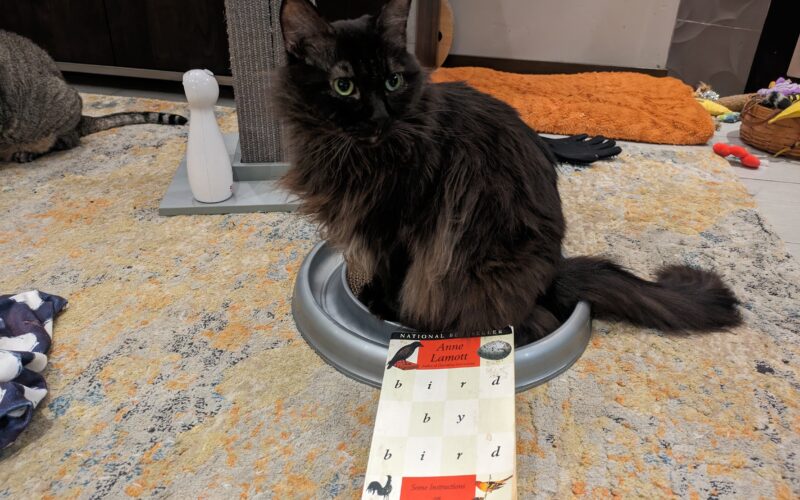
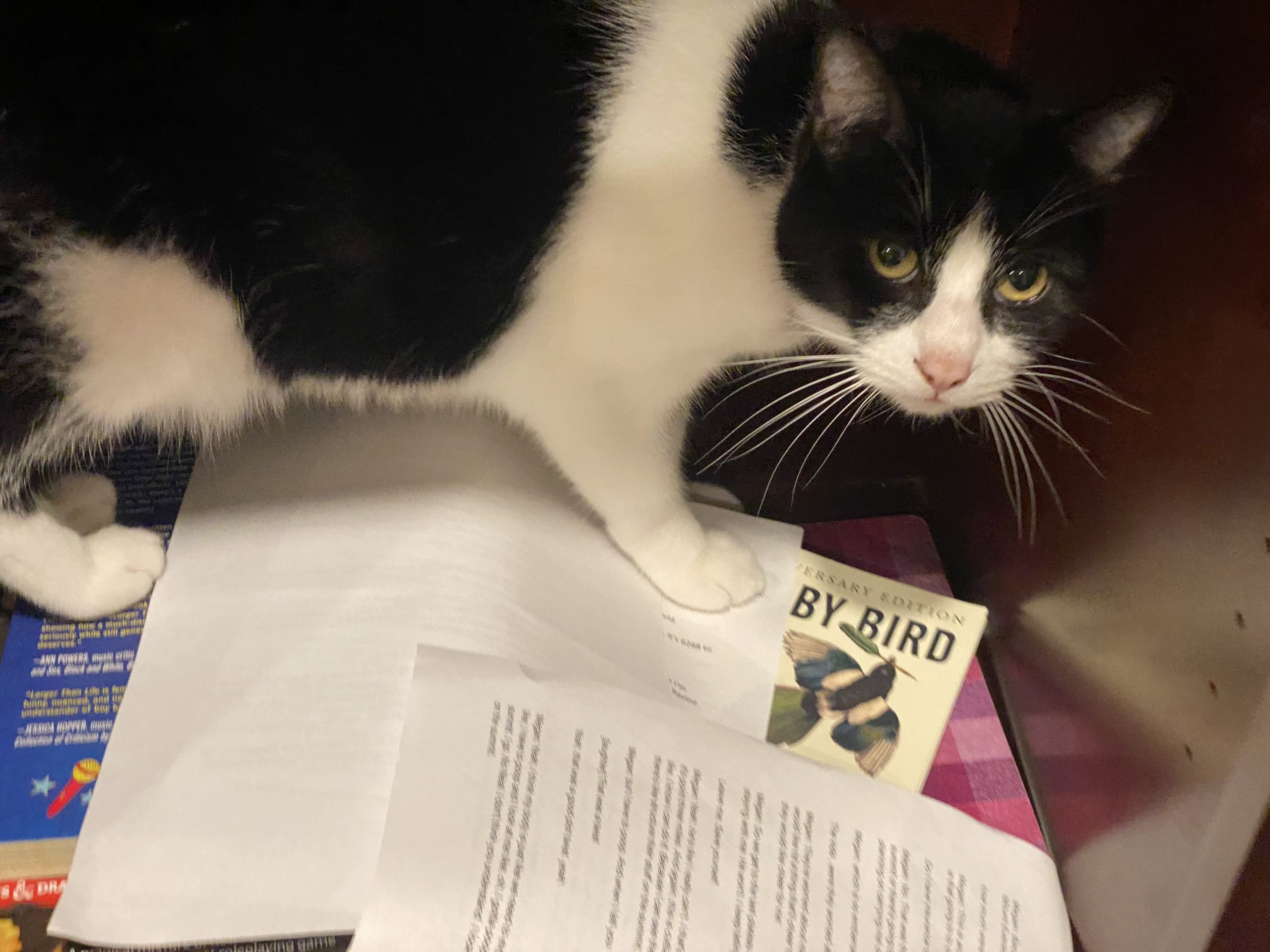





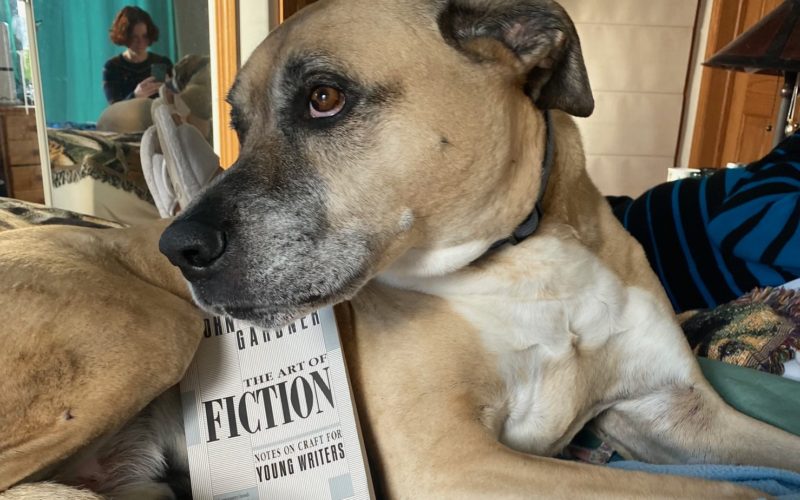


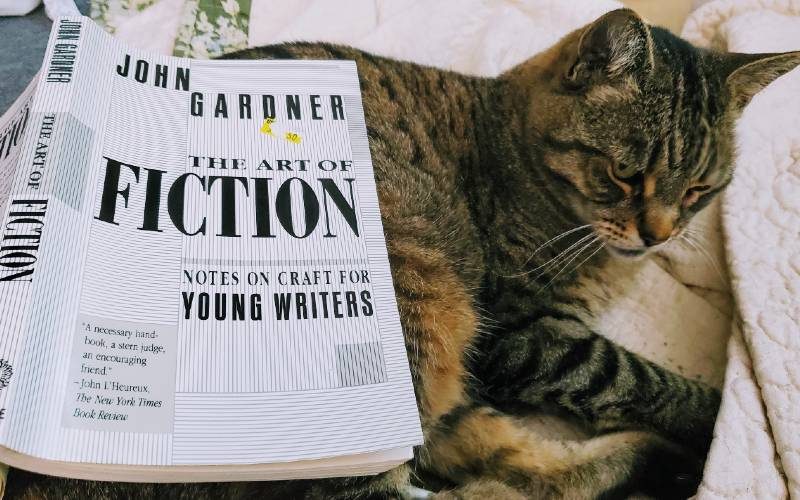
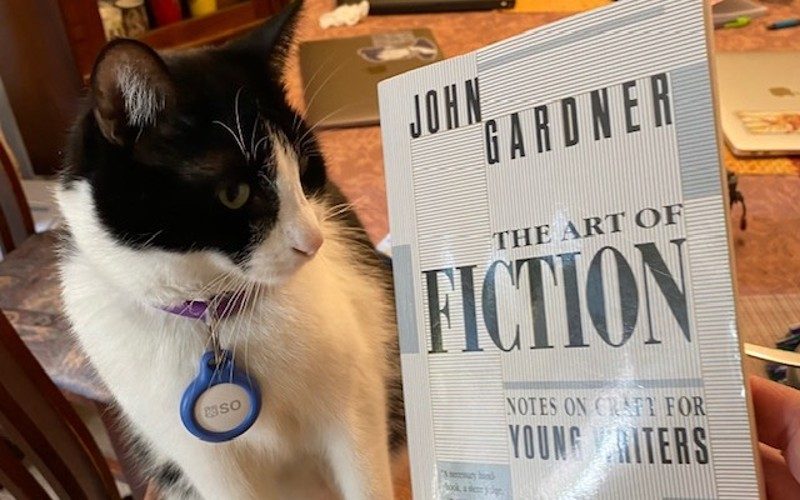
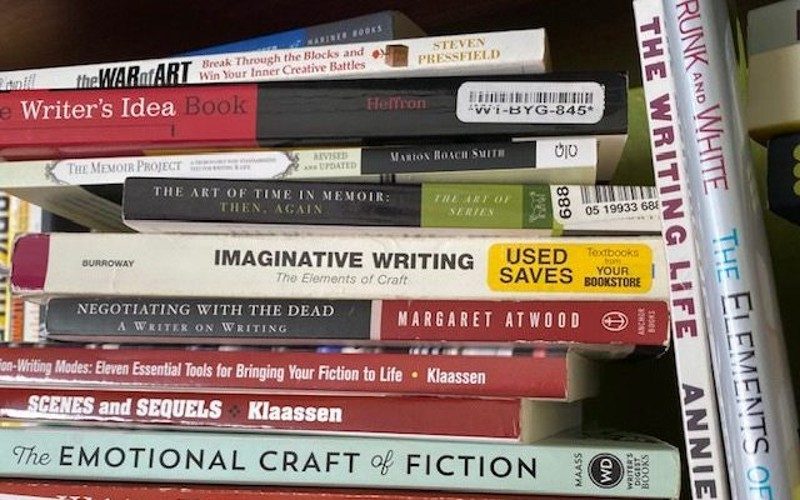
Bye Bye Birdy
How do you tackle one of the most famous writing craft books, you take it “Bird by Bird.” That’s what we’ve done with Anne Lamott’s book over the past...